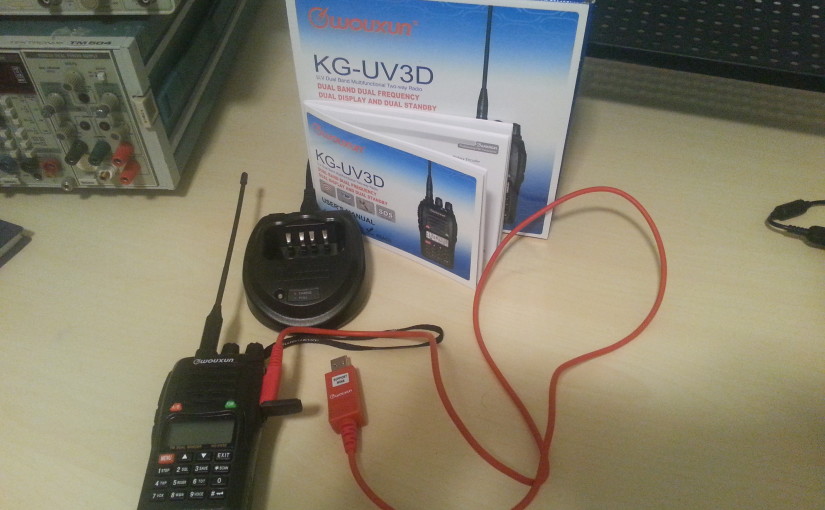I recently acquired my Technician Class Amateur Radio License and after some help from friends, new acquaintances and the internet at large decided I wanted to target either the 2m or the 440MHz amateur radio bands. The reasons for this are as follows:
- Around Boston the coverage is pretty good for both of these bands.
- The repeaters are accessible and Technicians Class licensee's can use them [ARRL]
- They support a wide range of communications techniques including FM audio and FM packet radio
- Equipment costs in these bands are pretty cheap and since 440MHz is close to the 3rd harmonic of 140MHz (2m) it is pretty reasonable to make dual band antenna's and buy dual-band gear.
Getting Your License
I feel compelled to remind everyone that in order to communicate over Amateur Radio frequencies, you NEED to have your amateur radio license. The ARRL has some good resources on the steps to take to get your Technician's License [ARRL]. If your not experienced in electronics, general engineering practice and have no real background I suggest you find a local club and take a class. Since I did have a working background I just studied for the test using Anki flash cards [Anki] and doing some reading in the ARRL Handbook [ARRL].
So study up and show up to an exam session. If you are in Boston I suggest going to the MIT Radio Club's exam (where took my Technician exam). Generally the exam staff will be encouraging, I would expect to be there for about 2 hours in the normal case, depending on how large your exam session is. Also, they will encourage you to take the exam for the next license. I suggest doing it, and actually studying for both licenses (if you have time).
Introducing the Bands
So let's start off introducing the bands that we are dealing with. I found two very useful guides to the band plans, one for the 2m band [Ham Radio School] and one for the 70 cm (440MHz) band [k0nr]. Since these websites can (and will) get out of date I advise looking at the ARRL's Band Plan Page, which should always be up to date. The reason to look at other band plan write-ups is not to gain absolute information, but instead to get best practices and understand at a finer level of detail what you should hear on any given band.
For the Wouxun KG-UV3D I am using it is important to note that it can only communicate with FM using analog audio by default. The digital FM modes will require additional hardware.
Getting Started with A Radio
So I pretty much just chose the Wouxun because it was in my budget and sounded like a good starting spot. Also Michael Hirsch who is part of the BU Radio Club (W1BUR) gave it as a recommendation. Looking around the internet it has reasonable reviews and I will say, so far it is treating me well. The manual can be a little hard to read, but I suggest reading through it and trying to hand program it a bit. Start off by scanning, and remember to be very careful not to accidentally press the button to transmit.
Once I felt competent with the manual controls, I took the programming cable and started messing around with CHIRP. CHIRP is an open-source program for Linux which allows you to upload settings to your radio, and also download local repeater and weather station information from the internet based on your area. I found this feature to be super useful for getting started and scanning the local repeaters. If you are using the Wouxun KG-UV3D like I was you will need to choose the KG-UVD1P model from the drop down menu to talk to your radio. If you are using Ubuntu Linux there is a really nice, and well maintained repo of radio related programs, which includes CHIRP. I will be giving more details on CHIRP in the future.
Getting on a repeater
I am not going to redo, the great work of others. Please just read N4UJW's guide on repeaters. I will say a few things to calm you down about your first contact though!
- Remember to announce yourself! "CALLSIGN listening!" usually works great. Don't talk over anyone and make sure you are not interrupting a conversation or data transmission.
- Make sure you annunciate your call sign. It will feel weird at first and you might need to repeat a few times so that the other party can copy it.
- Make sure you give your name and location. This opens most people up more than talking to a alphanumeric code (that doesn't sound like a name).
- Talk about your radios! I noticed this is what most people talk about, and it is a great way to get to know what else is out there in the hobby.
Thanks to
- The MIT Radio Society (W1MX) for administering the HAM Radio Exams (and running the W1XM repeater)
- The BU Radio Club (W1BUR), and Michael Hirsch for welcoming me to the hobby and giving me some recommendation (the Wouxun was a recommendation from Michael)
- 73 KC1DMK
